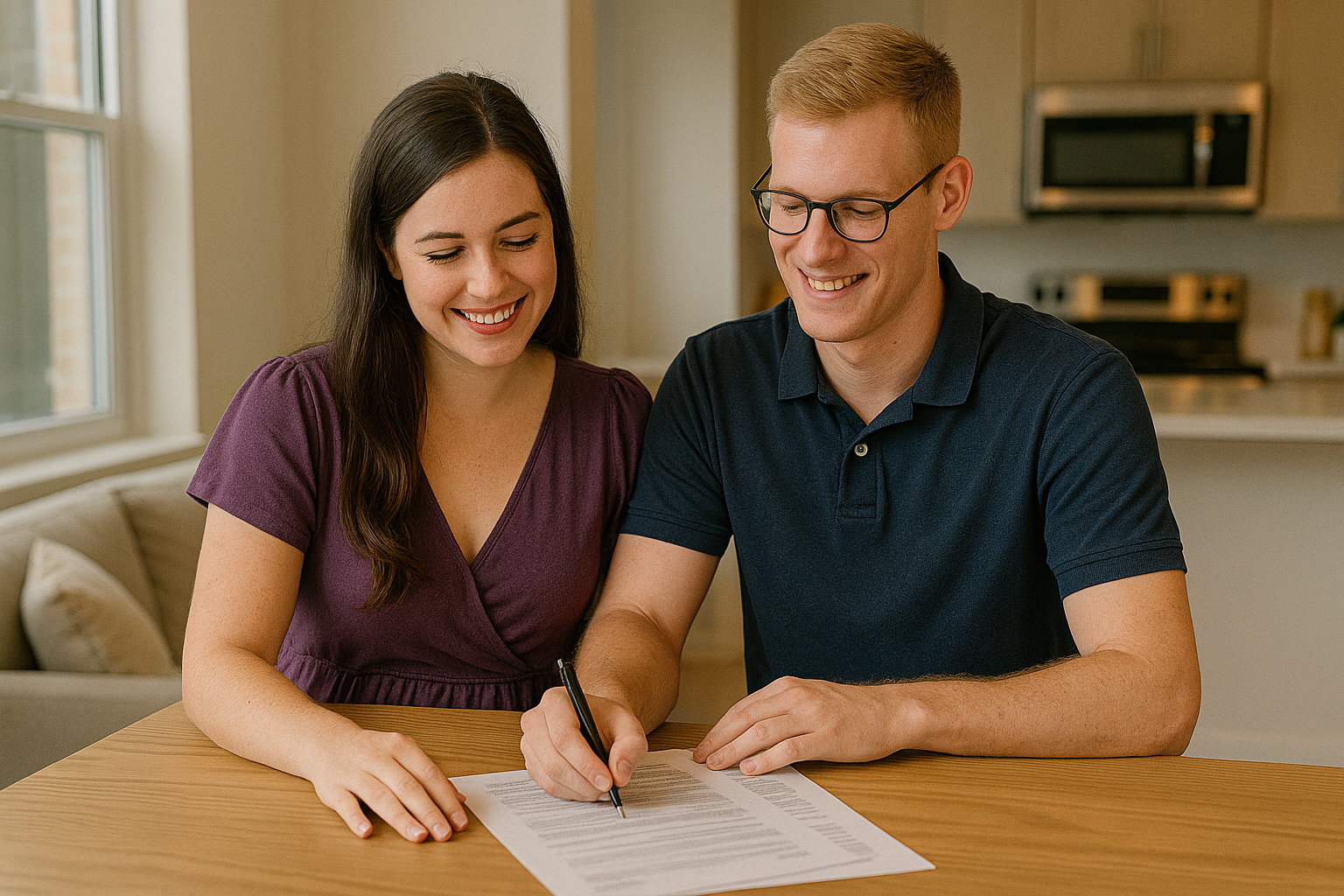Introduction: What Does “Affordable” Really Mean in 2025?
When you start thinking about buying a home, one of the first questions you might ask is, “How much income do I really need?” With headlines about soaring home prices and tightening credit, many prospective buyers feel that owning a home is reserved for those with huge salaries. But here’s the truth: affordability isn’t determined solely by the sticker price—it’s about your monthly payment, credit, down payment, and overall financial profile.
In today’s 2025 market, whether you’re looking at a $300,000 or a $500,000 home, several factors come into play that determine what you can afford. The journey begins with understanding what lenders look at, exploring different income scenarios, and knowing how to boost your purchasing power. This guide will break down everything you need to know so you can set realistic expectations—and even find that you might be closer to homeownership than you think.
At First Nation Financial, we help buyers from all walks of life navigate these complexities. Whether you’re a first-time buyer or someone looking to upgrade, our goal is to empower you with the knowledge to make informed decisions. Let’s dive in.
Understanding What Lenders Look At
Before you even start calculating how much income you need, it’s important to understand the key factors that lenders consider when evaluating your mortgage application. The most critical of these is the debt-to-income (DTI) ratio, which measures how much of your monthly income goes toward debt. Lenders typically prefer a DTI of 43% or lower, though some programs allow for a bit more if other compensating factors are present.
In addition to DTI, lenders evaluate:
- Monthly housing costs: This isn’t just the mortgage payment; it includes property taxes, insurance, and, if applicable, private mortgage insurance (PMI). These costs determine your overall monthly housing burden.
- Credit score: A higher score typically translates into better interest rates and more favorable loan terms.
- Down payment amount: This affects not only your monthly payment but also whether you’ll need to pay for PMI.
- Existing debt: Everything from car loans to credit card balances is factored in.
Understanding these components is crucial because they help you see that it’s not the home’s price alone that matters—it’s how those costs fit into your overall financial picture. For more details on getting a solid start, check out How to Get Pre-Approved for a Mortgage: A Step-by-Step Guide.
How Much Income You Need for a $300,000 Home
Let’s break down a scenario for a $300,000 home. When determining affordability, you need to consider not only the purchase price but also all the additional costs that come with homeownership.
Monthly Housing Cost Breakdown
Imagine you buy a $300,000 home with a low down payment—say, 3% down with a conventional loan. Here’s what your costs might look like:
- Home Price: $300,000
- Down Payment (3%): $9,000
- Loan Amount: Approximately $291,000
- Estimated Monthly Mortgage Payment: Around $1,400 to $1,500 (this depends on the interest rate, which may be in the range of 5% to 6% for a low-down-payment loan)
- Property Taxes & Insurance: Add roughly $400 to $600 per month
- PMI (if applicable): $100 to $150 per month until you reach 20% equity
So, your total estimated monthly housing expense might be in the ballpark of $1,900 to $2,200. For lenders, this monthly cost is a critical figure.
Income Requirements
Lenders generally want your monthly housing expense to be no more than about 28% of your gross monthly income. Using this guideline:
- If your total monthly cost is $2,000, your gross monthly income should be at least $7,143 (because $2,000 is 28% of $7,143).
- This translates to an annual income of roughly $85,700.
Of course, individual circumstances vary. If you have minimal debt and a strong credit score, you might qualify with slightly less income. Conversely, if you have additional monthly debts, your income requirement could be higher.
Scenario Variations
- Minimal Debt Scenario: If you’re not carrying any significant debt, your DTI will be lower, meaning you might qualify with an income slightly under $85,000.
- Dual-Income Household: If you’re buying as a couple with combined income, even if one person earns less, the combined income can meet the threshold comfortably.
- With Existing Debt: If you have car loans, student loans, or other recurring debts, your required income might increase to ensure that your overall DTI stays within acceptable limits.
Remember, these are estimates—actual requirements depend on the lender’s criteria, your credit profile, and the specific loan program you choose.
How Much Income You Need for a $500,000 Home
Now, let’s consider a higher-end scenario—a $500,000 home. With a more expensive property, not only does the purchase price increase, but so do property taxes, insurance, and other related costs.
Monthly Housing Cost Breakdown
For a $500,000 home with a low down payment (again, let’s use a 3% down payment as an example):
- Home Price: $500,000
- Down Payment (3%): $15,000
- Loan Amount: Approximately $485,000
- Estimated Monthly Mortgage Payment: Likely in the range of $2,200 to $2,500 (depending on the interest rate)
- Property Taxes & Insurance: Likely add another $600 to $800 per month
- PMI (if applicable): Could add an additional $150 to $200 per month
The total estimated monthly housing expense might then be around $3,000 to $3,500.
Income Requirements
Using the same guideline (monthly housing expense should be about 28% of your gross monthly income):
- If your total monthly cost is $3,500, your gross monthly income should be about $12,500 (because 28% of $12,500 is $3,500).
- This equates to an annual income of roughly $150,000.
Scenario Variations
- With Down Payment Assistance: Some buyers might qualify for down payment assistance programs that lower the required upfront payment, thereby slightly reducing monthly costs.
- Location Differences: Keep in mind that these numbers can vary between markets. For example, a $500,000 home in parts of Houston might have lower taxes and insurance compared to one in a high-cost California area.
- Debt Load and Credit Profile: Just like with a $300K home, if you have lower debt or excellent credit, you may have some flexibility in the required income. However, for a $500K property, the stakes are higher, and you’ll likely need a higher combined income to comfortably afford the monthly payments.
By understanding these figures, you can better plan your budget and work on improving your financial profile—whether that means paying down debt or boosting your credit score—to position yourself for a mortgage on a $300K or $500K home.
How to Increase What You Can Afford
If the numbers above make you wonder if you’re in the right income bracket, don’t worry. There are several strategies you can adopt to improve your mortgage qualification:
Reduce Your Debt
One of the fastest ways to improve your debt-to-income ratio is to pay down existing debt. Whether it’s credit cards, car loans, or student loans, reducing these monthly obligations will lower your DTI, making you a more attractive candidate to lenders. Even small reductions can add up and make a significant difference.
Boost Your Credit Score
A higher credit score not only improves your chances of getting approved but also helps secure lower interest rates. Simple steps like paying bills on time, reducing credit card balances, and checking your credit report for errors can boost your score over time. A better rate can mean a lower monthly payment, which in turn can increase the maximum mortgage you can afford.
Consider a Longer Loan Term
While a longer loan term may result in paying more interest over the life of the loan, it can significantly reduce your monthly payment. For example, choosing a 30-year fixed-rate mortgage instead of a 15-year mortgage can lower your payment, which might help you qualify with a lower income. However, weigh the long-term costs carefully.
Look at Adjustable-Rate Options
If you plan to refinance or move within a few years, an adjustable-rate mortgage (ARM) might offer a lower initial interest rate compared to a fixed-rate mortgage. While ARMs come with some risk if rates rise, they can be a good option for buyers who are confident in their short-term plans.
Add a Co-Borrower
Sometimes, partnering with a co-borrower—such as a spouse, family member, or trusted friend—can boost your combined income and improve your chances of qualification. This can be especially helpful if you’re on the edge of meeting the required income level.
By taking proactive steps now—reducing debt, improving your credit, and exploring all available financing options—you can increase your home-buying power and be better prepared for when the right property comes along.
Why Pre-Approval Is the Best First Step
Before you start browsing listings or visiting open houses, getting pre-approved for a mortgage is essential. Pre-approval is more than just a letter—it’s a detailed assessment of your financial situation by a lender. It gives you a clear picture of what you can afford and puts you in a stronger position when making an offer.
Benefits of Pre-Approval:
- Clear Budgeting: Pre-approval tells you exactly how much you can borrow, which helps you focus on homes within your price range.
- Stronger Offers: Sellers take pre-approved buyers more seriously because it shows you’re financially ready.
- Faster Closing: With most of the paperwork already done, you can move quickly when you find the right home.
- Confidence: Knowing your financial limits helps reduce stress and uncertainty during the home search.
By starting with pre-approval, you gain a realistic understanding of your buying power. This step is crucial to ensure that when you find the right home, you can act fast and confidently. For detailed steps on how to secure a pre-approval, check out How to Get Pre-Approved for a Mortgage: A Step-by-Step Guide.
Conclusion: You Might Be Closer Than You Think
When you break down the numbers, you may be surprised to learn that you’re closer to homeownership than you think. Whether you’re looking at a $300,000 home or a $500,000 home, the key is understanding how much income you need and what strategies can help you qualify for the best mortgage.
With the right planning and guidance, owning a home isn’t reserved for the ultra-rich or those with perfect credit. It’s about smart financial management, understanding the market, and taking decisive steps like getting pre-approved. Every step you take—from reducing your debt and boosting your credit score to exploring various loan programs—brings you one step closer to turning the dream of homeownership into a reality.
At First Nation Financial, we’re dedicated to helping you navigate this process with confidence. Our team is here to help you evaluate your financial situation, explore all available mortgage options, and secure a loan that fits your needs—whether you’re aiming for a modest home or a more expensive property.
If you’re ready to take the next step or simply want to know where you stand, don’t hesitate. Every journey begins with a single step, and your journey to homeownership might be closer than you think.
📞 Book a consultation today
📧 Contact us for more details
Your dream home is within reach—let’s make it happen together.



